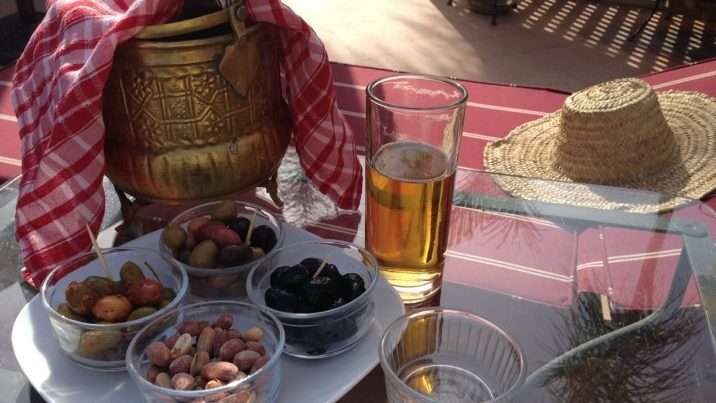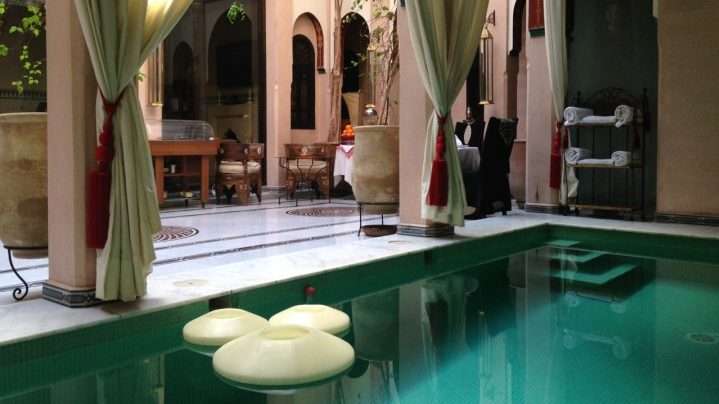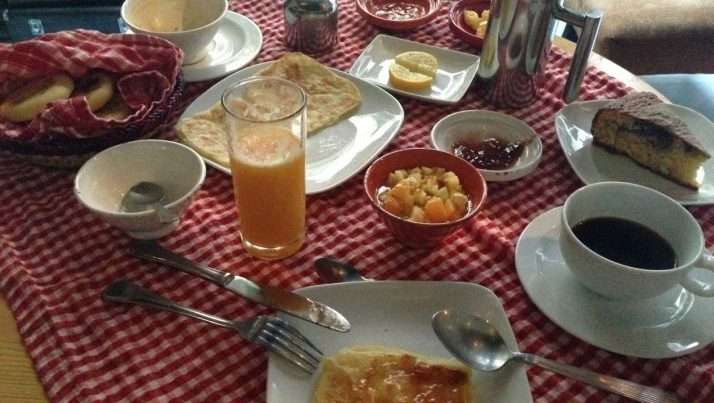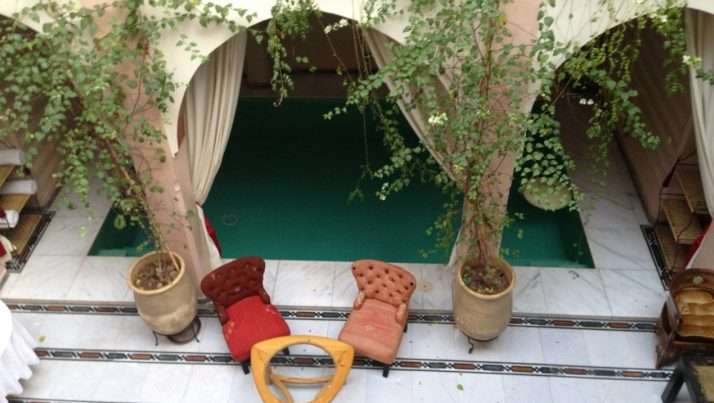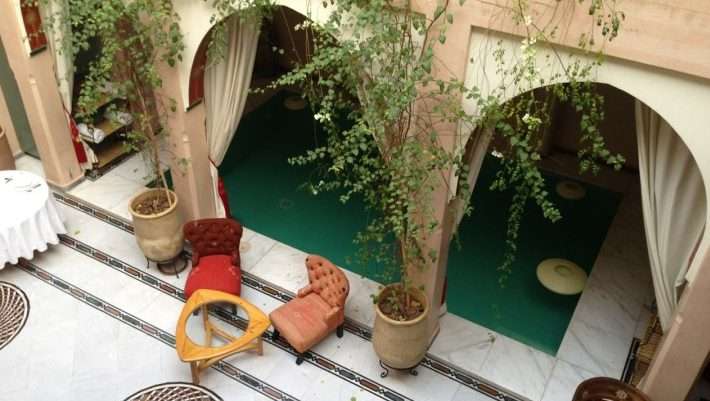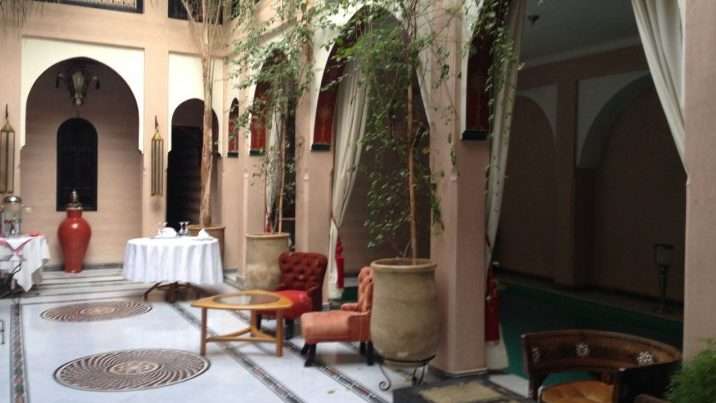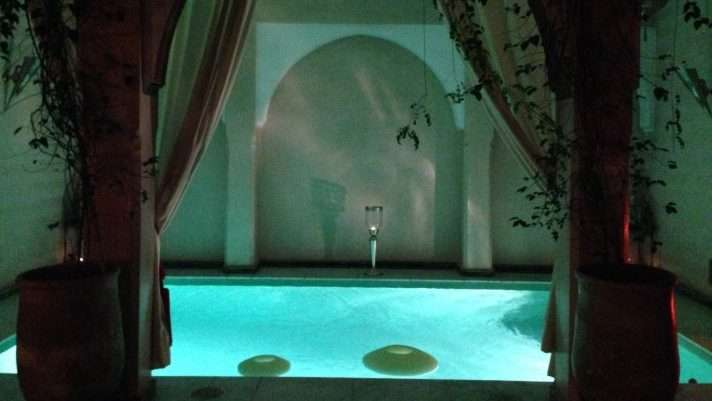Look no further than Riad Dar Anika, a paradise within the medina of Marrakech. A real oasis of pleasure and comfort from the moment you enter it’s doors until the time to say farewell.
Dar Anika is peaceful and tranquil inside, a riad, a traditional Moroccan house or palace with an interior courtyard, converted into a hotel. The word riad comes from the Arabian term for garden, “ryad“, often interpreted to mean “paradise”.
I felt like a king as every whim was catered, from transportation and transfers to the medina tour with a private guide. Drinking Casablanca beer on the roof terrace, with the snow-covered Atlas Mountains in view in the distance. Mixed olives and marinated carrots and pickles or a sweet cake and cream, snacks always available, feeling hungry is something one will never be here.
Calm, relaxed and informal, Dar Anika staff show a real interest in guests comfort and holiday enjoyment. The courtyard at the heart of the building has a heated pool on one side and a cosy enclosed lounge with fireplace on the other side.
A private on-site hammam can be arranged, followed up by a private massage. Guests will find mineral water, flowers and Moroccan pastries in their room on arrival. All rooms offer modern amenities, telephone, Wi-fi, safe, and air-conditioned and equipped with a private bathroom.
Close to the Badii Palace, the Saadian Tombs and the bizarrely interesting Jemaa el-Fnaa square with all the hustle and bustle of the souk outside the door.
Prepare for an outstanding breakfast that will fuel you for most of the day as you sit by the fire in the lounge, or upon the outdoor terrace if you find it warm enough to be outside.
Dar Anika went above and beyond my expectations, a real pleasurable stay that could be hard to beat with its very personal attention to service, ensuring every individual need is met.
What is a Riad?
Traditionally riads were inward focused, which allowed for family privacy and protection from the weather in Morocco. This inward focus was expressed in the central location of most of the interior gardens and courtyards and the lack of large windows on the exterior. This design principle found support in Islamic notions of privacy.
Entrance to these houses is a major transitional experience and encourages reflection because all of the rooms open into the central atrium space. In the central garden of traditional roads, there were often four orange or lemon trees and possibly a fountain. The walls of the riads are adorned with tadelakt plaster and zellige tiles, usually with Arabic calligraphy, with quotes from the Quran. Many riads are now used as hotels or restaurants.
